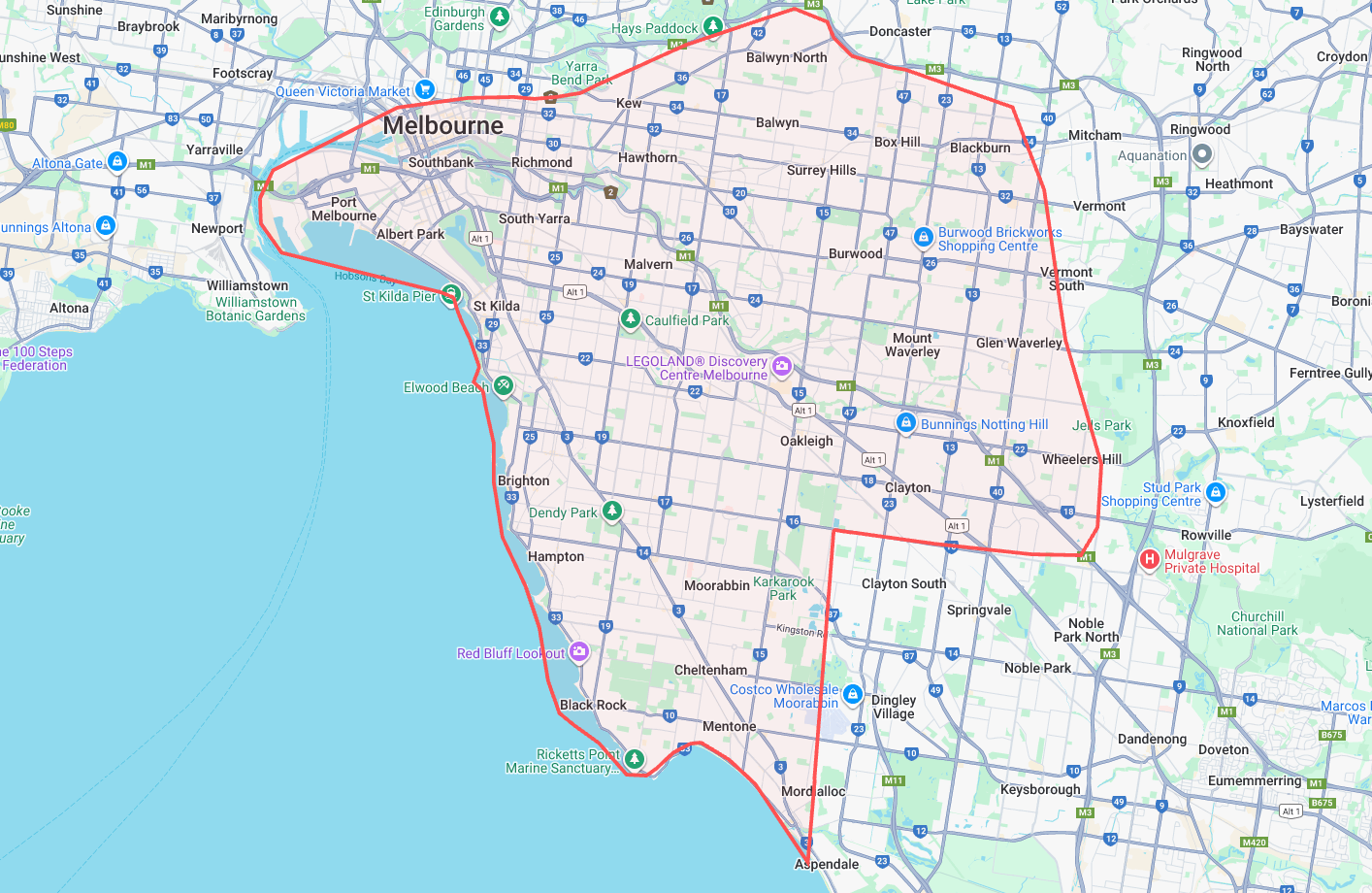How to Clean Rendered Wall: The Safe and Effective Way
Rendered walls are a popular exterior finish for homes across Melbourne — modern, sleek, and visually striking. But over time, even the most pristine surfaces can become stained by algae, mould, and general grime. If you’ve been wondering how to clean rendered wall surfaces without causing damage, you’re in the right place.
In Melbourne’s damp and often unpredictable climate, rendered walls are especially prone to discolouration and organic growth. That’s why it’s important to clean them regularly — but the method matters. High-pressure cleaning might seem like the obvious fix, but it can actually chip or damage delicate render. Instead, techniques like soft washing are much safer and more effective in most cases.
In this article, we’ll break down exactly how to clean rendered wall surfaces safely, including:
-
The difference between soft washing and pressure washing
-
What cleaning solutions actually work
-
How often to clean rendered surfaces
-
Tips for Melbourne homeowners based on local conditions
Whether you’re tackling a small area or a full exterior, we’ll walk you through what works — and what to avoid.
And of course, if you find that cleaning your rendered wall is more involved than expected, our team at Mr. Sparkle can help. We specialise in render cleaning in Melbourne, using gentle and proven techniques that protect your home’s finish while restoring its look.
Why Rendered Walls Get Dirty — And What Not to Do
Rendered walls — whether cement-based or acrylic — are porous. This means they naturally absorb moisture and airborne pollutants, especially during Melbourne’s cold and wet months. Over time, this leads to:
-
Mould and algae growth, particularly on shaded walls
-
General grime from dust, pollen, pollution, and spider webs
-
Water stains and streaks, especially under windows and near rooflines
All of this can dull your home’s appearance and, if left untreated, may lead to permanent staining or deterioration of the render.
Common Mistakes to Avoid
When figuring out how to clean rendered wall exteriors, many people assume high pressure is the answer. But blasting a rendered surface with a pressure washer can cause more harm than good. Here’s what to avoid:
-
❌ High-pressure washing directly on the wall – this can erode the render or cause chipping.
-
❌ Harsh chemical cleaners – these may stain or damage the surface permanently.
-
❌ Scrubbing with abrasive tools – especially risky for older or cracked render.
Instead, the safest method is called soft washing — a low-pressure cleaning process that uses specialised cleaning agents to kill mould and lift dirt without damaging the surface. For homes in Melbourne, this approach is not just safer — it’s more effective in the long run.
What Is Soft Washing — And Why It Works for Render
When researching how to clean rendered wall surfaces, you’ll often come across the term soft washing. But what exactly is it?
Soft washing is a low-pressure cleaning method designed to safely treat delicate exterior surfaces — like render, weatherboard, or painted finishes. Instead of relying on brute force like traditional pressure washing, soft washing uses a combination of low water pressure and biodegradable cleaning solutions to:
-
Kill mould, algae, and lichen at the root
-
Loosen built-up grime, dirt, and stains
-
Gently rinse it all away without damaging the surface
This method is particularly useful for homes in Melbourne, where damp, shaded areas encourage organic growth. A proper soft wash treatment not only restores the clean look of your walls — it also sanitises the surface and slows future regrowth.
Soft Washing vs Pressure Washing
| Method | Pressure Washing | Soft Washing |
|---|---|---|
| Pressure Level | High (1500–4000 PSI) | Low (under 500 PSI) |
| Cleaning Type | Force-based | Solution-based |
| Surface Risk | Can damage render | Safe for delicate render |
| Effectiveness | Removes surface dirt | Removes and kills organic growth |
If you’re in Melbourne and looking for the safest way to clean a rendered surface, soft washing is the industry-preferred method. In fact, it’s what we use here at Mr. Sparkle for all our render cleaning Melbourne jobs.
Step-by-Step Guide: How to Clean Rendered Wall Safely
Now that you understand what soft washing is and why it works best for delicate surfaces, let’s walk through how to clean rendered wall areas on your own — step by step.
⚠️ Always test any cleaning solution on a small, hidden area first. And if your render is cracked, flaking, or severely stained, it’s best to speak to a professional before attempting any DIY cleaning.
What You’ll Need:
-
Garden hose with spray nozzle or low-pressure washer (never high pressure)
-
Soft bristle brush or sponge
-
Pump sprayer or low-pressure applicator
-
Cleaning solution (e.g. sodium hypochlorite + surfactant mix)
-
Protective gear (gloves, goggles, long sleeves)
Step 1: Wet the Wall
Lightly rinse the surface using your hose or low-pressure washer. This helps loosen dirt and prevents the solution from drying too fast.
Step 2: Apply the Soft Wash Solution
Using your applicator, coat the wall from bottom to top. Let it sit for 5–10 minutes to kill organic growth and break down grime.
Step 3: Gently Scrub Tough Spots
Use a soft brush to lightly agitate any stubborn stains or growth. Avoid scrubbing too hard.
Step 4: Rinse Thoroughly
Rinse the wall from top to bottom with clean water. Ensure all residue is removed.
Step 5: Repeat if Needed
Some walls may need a second treatment after 24–48 hours. This is especially true for long-neglected areas.
If you’re confident and have the right tools, this DIY method can work well. But if you’d rather not risk it, our team is here to help.
At Mr. Sparkle, we use professional-grade soft wash systems designed specifically for render cleaning in Melbourne — safe, effective, and hassle-free.
How Often Should You Clean Rendered Walls?
Once you know how to clean rendered wall surfaces safely, it’s smart to stay on top of maintenance.
Generally, we recommend cleaning rendered walls every 12–18 months. However, if your home is in a shaded area, near trees, or along the coast, you may need to clean more often.
In Melbourne, the cold and damp seasons tend to accelerate algae and mould buildup. A quick inspection every 6 months — especially after winter — is a good habit.
Regular cleaning helps:
-
Prevent permanent staining
-
Preserve your home’s curb appeal
-
Extend the lifespan of your render
Not sure if it’s time to clean your wall? We’re happy to take a look and advise — no pressure.
FAQ: Cleaning Rendered Walls
How do you clean a rendered wall without damaging it?
Use a soft washing method: low pressure and the right biodegradable solution. Avoid harsh scrubbing or high-pressure washing.
Can I pressure wash a rendered wall?
No — high pressure can damage render. Soft washing is the safer, more effective choice.
What’s the green stuff on my wall?
Usually algae or moss, especially common in Melbourne’s damp seasons. Soft washing removes it and slows regrowth.
Is soft washing safe for painted render?
Yes. It’s safe for coloured and painted surfaces when done correctly.
Final Thoughts – Need Help with Render Cleaning in Melbourne?
Knowing how to clean rendered wall surfaces properly is a great first step. Whether you’re preparing for sale, maintaining your property, or just want your home to look its best, cleaning your render safely makes a huge difference.
If you’re short on time, don’t want to risk damage, or just want perfect results — we’re here to help.
At Mr. Sparkle Window Cleaning & Pressure Washing, we specialise in soft washing and render cleaning Melbourne homeowners trust. No harsh pressure, no mess — just great results.
Want to learn more?
Visit: https://mrsparklewindowcleaning.com.au/house-washing/
Get a free quote today — no obligations.





